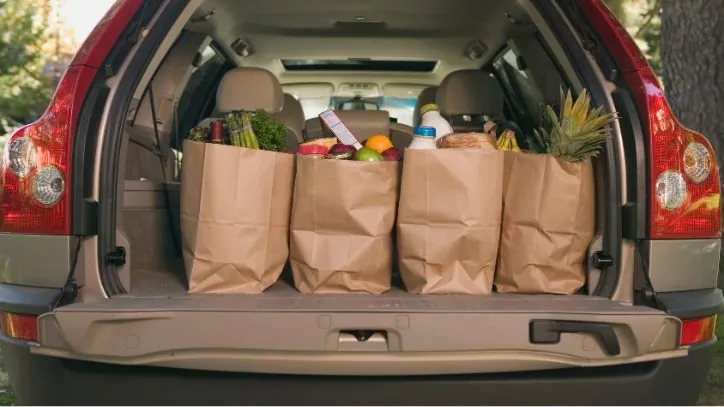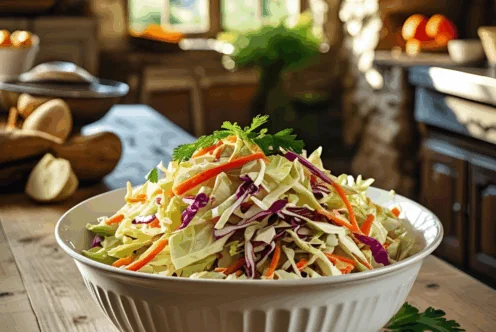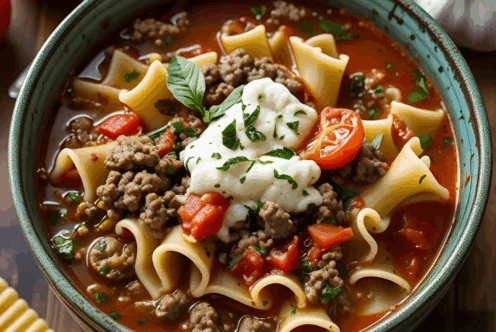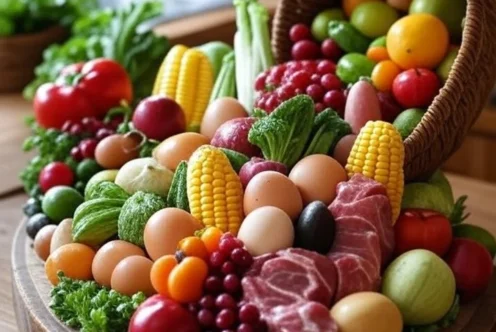Blog
The 6 to 1 Grocery Shopping Method

Grocery shopping can often feel like a daunting task. You may open your fridge and find it nearly empty except for a few random items, which can lead to stress about what to cook or, worse, resorting to ordering takeout again. Familiar, right? All too often, we find ourselves in this scenario where our grocery list is non-existent, or we overpurchase things we don’t end up using. One approach that can help streamline this process is the 6 to 1 Grocery Shopping Method, developed by renowned chef and TV personality Will Coleman. This method is designed to simplify shopping while optimizing taste, healthfulness, and budget.
Understanding the 6 to 1 Method
The 6 to 1 method introduces a structured yet flexible approach to grocery shopping. Here’s a detailed breakdown:
1. Weekly Shopping Trips
The basis of this method encourages you to limit your grocery shopping to once a week, or twice if you are shopping for a larger family. This limitation helps reduce impulse buys and forces you to plan your meals ahead of time. It can also save you time and fuel costs associated with frequent grocery store trips.
2. Meal Ideas Over a Predetermined List
Instead of crafting an exhaustive shopping list filled with specific products, the 6 to 1 method suggests you come in with meal ideas or inspirations. This encourages creativity in cooking—allowing you to mix and match ingredients based on what looks fresh and appealing at the store instead of sticking rigidly to a list.
3. Focus on Personal Taste
By buying foods that sound good and that you genuinely want to eat, you’re more likely to enjoy your meals and reduce the chances of food wasting. Consider what you can envision incorporating into your meals during the week. The aim here is to promote meals that you’ll look forward to enjoying, rather than what you feel obliged to consume.

4. Structured Shopping Quantities
The essence of the 6 to 1 method lies in its quantity recommendations:
- 6 Vegetables: Aim for a variety that adds color and nutrition to your meals. Think beyond just leafy greens; consider bell peppers, carrots, zucchini, or sweet potatoes.
- 5 Fruits: Choose fruits that you can snack on or incorporate into breakfast or dessert. Seasonal fruits often provide the best flavors and prices.
- 4 Proteins: This could include meats, tofu, beans, or legumes. By varying your protein sources, you’ll keep your meals interesting and balanced.
- 3 Starches: Opt for whole grains such as quinoa, rice, and sweet potatoes to give your meals substance and health benefits.
- 2 Sauces, Spreads, or Seasonings: Flavors make all the difference! Opt for a couple of versatile sauces or seasonings that can jazz up your dishes during the week.
- 1 Fun Treat: Shopping is not just about being practical; it should also be enjoyable! This could be a favorite snack, dessert, or even a special beverage.
Benefits of the 6 to 1 Method
A. Healthiness and Nutrition
One of the significant advantages of the 6 to 1 method is its focus on balanced nutrition. The structured approach encourages you to include a variety of food groups, promoting a more wholesome and healthful diet. Leveraging seasonal and fresh ingredients can increase the nutritional value of your meals. For more information on nutritious eating, check out the USDA’s dietary guidelines.
B. Budget-Friendly
In today’s world, where grocery prices are ever-increasing, the 6 to 1 method helps in minimizing unnecessary spending. By limiting the quantity of foods you purchase, this method encourages you to make mindful choices about what you buy, ultimately reducing food waste—something many households struggle with. You can find more insights on minimizing food waste at EPA Food Waste.
C. Reduces Food Waste
The average American family throws away approximately 25% of the food they purchase. This method encourages thoughtful buying—by only choosing items you will enjoy and eat, you will minimize the chances of food spoilage. For tips on reducing food waste further, check out Love Food Hate Waste.
D. Flexibility and Creativity in Cooking
The flexibility of the 6 to 1 method allows you to adapt based on what’s available at your local grocery store. This encourages creativity in cooking and meal prep. You might find that a certain vegetable or protein looks great, leading you to explore new recipes and flavors you might have overlooked otherwise. For recipe inspiration, visit AllRecipes.
E. Promotes Mindful Eating
By choosing the food you actually want to eat, the 6 to 1 method encourages more mindful eating habits. You’ll appreciate your meals more, as they will be more enticing and enjoyable, which can lead to a healthier relationship with food.
Implementing the 6 to 1 Method
Planning Your Week
Before heading out for groceries, take some time to plan your week. Consider:
- Go Over Your Inventory: Check what you already have in your pantry and fridge to avoid purchasing duplicate items.
- Plan Meals: Think of a few meals you’d like to make using those items. There’s no need to map out every meal, but have a general idea of what you’ll enjoy throughout the week.
- Note What You Need: Jot down the items needed based on your meal ideas following the 6 to 1 structure.
Tips for Grocery Shopping
- Shop the Perimeter: When you enter a grocery store, the perimeter typically holds fresh produce, dairy, and meats, while processed items are often found in the aisles. Stick to the outer edges to fill your cart with healthier options.
- Buy Seasonal Produce: Purchasing fruits and vegetables that are in season not only tastes better but is often more affordable. Check out our articles about local seasonal produce.
- Be Adventurous: Don’t hesitate to try something new! Occasionally selecting different vegetables, proteins, or sauces can lead to delightful new experiments in your kitchen.
- Stay On Course: It can be tempting to be swayed by promotions or the alluring snacks they put at eye level. Stick to your list as closely as possible to avoid straying too far from the 6 to 1 method.
- Bring Reusable Bags: Not only does this help the environment, but it can also reduce your costs if your local store offers incentives for bringing your bags.
Recipe Ideas Based on the 6 to 1 Method
Here’s how you can utilize the 6 to 1 method in practice with a few meal ideas.
Day 1: Vegetable Stir-Fry
- Vegetables: Bell pepper, zucchini, broccoli, carrot, snap peas, and baby corn.
- Protein: Tofu or chicken.
- Starch: Brown rice.
- Sauce: Soy sauce with a touch of sesame oil.
Prepare a colorful stir-fry for dinner—easy and quick!
Day 2: Quinoa Salad
- Vegetables: Spinach, cucumber, cherry tomatoes, red onion, and bell pepper.
- Protein: Chickpeas.
- Starch: Quinoa.
- Dressing: Olive oil, lemon juice, and cumin.
Toss all ingredients together for a refreshing lunch or dinner option.
Day 3: Sweet Potato & Black Bean Tacos
- Vegetables: Sweet potato, red onion, avocado, and cilantro.
- Protein: Black beans.
- Starch: Corn tortillas.
- Sauce: Hot sauce for some kick!
Roast the sweet potatoes and combine them in tortillas with black beans and toppings for a delicious meal.
Conclusion
The 6 to 1 grocery shopping method provides a structured yet adaptable approach to grocery shopping, allowing for a balance between health, enjoyment, and budget-consciousness. By focusing on flavors and preferences while incorporating a variety of food groups, you can make grocery shopping a much more enjoyable and fruitful experience.
As you explore the 6 to 1 method, remember that everyone’s needs and preferences may differ, so feel free to adapt this strategy to suit your lifestyle. You might also want to keep experimenting with different meal ideas and tweak your shopping habits accordingly. With some practice and creativity, you’ll find that grocery shopping becomes an easier and more delightful task, paving the way for flavorful, homemade meals throughout the week.
For more tips and healthy recipes, check out platforms like Fill Your Plate which offers a wealth of information on grocery shopping and healthy eating practices! Happy shopping!
By Heide Kennedy, Arizona Farm Bureau Communications Intern


















